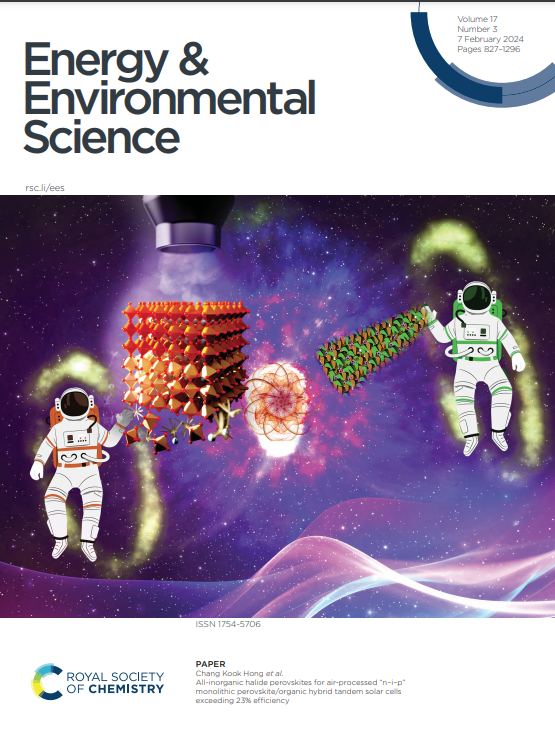Immediate remaining capacity estimation of heterogeneous second-life lithium-ion batteries via deep generative transfer learning
IF 32.4
1区 材料科学
Q1 CHEMISTRY, MULTIDISCIPLINARY
引用次数: 0
Abstract
The reuse of second-life lithium-ion batteries (LIBs) retired from electric vehicles is critical for energy storage in underdeveloped regions, where power infrastructures is weak or absent. However, estimating the relative remaining capacity (RRC) of second-life batteries using field-accessible data stream remains challenging due to its scarcity and heterogeneity, despite efforts in battery passports and other initiatives to secure data integrity. This study proposes a deep generative transfer learning framework to address these two-fold challenges by generating voltage dynamics across state-of-charge (SOC) and using deep correlation alignment (CORAL) to align heterogeneities resulting from different aging patterns (domains) of second-life LIBs. We generate voltage response dynamics data across various SOC conditions from 20,160 samples under 10 SOC values, demonstrating high statistical similarities and confidence. The model estimates the RRC with minimal field data availability, specifically 2% of the full sample size, achieving a mean absolute percentage error of 7.2% and 3.6% for second-life batteries with different degradation behaviors, respectively. The model preserves established knowledge in the available domain while reducing RRC estimation risks in new domains where data availability is limited. The maximum RRC estimation risk is reduced by 49% at a 95% confidence level. This unified data generation and transfer learning paradigm outperforms state-of-the-art machine learning and equivalent circuit model- method across all data availability conditions. The “generate and transfer” paradigm enlightens many potential applications in other predictive management tasks by preferentially generalizing in-distribution data and then adapting to out-of-distribution conditions under guidance of limited field data.基于深度生成迁移学习的异构二次寿命锂离子电池即时剩余容量估算
从电动汽车上退役的二次寿命锂离子电池(LIBs)的再利用对于电力基础设施薄弱或缺乏电力基础设施的欠发达地区的能源储存至关重要。然而,使用现场可访问的数据流估算二次电池的相对剩余容量(RRC)仍然具有挑战性,因为它的稀缺性和异质性,尽管在电池护照和其他计划中努力确保数据完整性。本研究提出了一个深度生成迁移学习框架,通过在充电状态(SOC)之间生成电压动态,并使用深度相关对齐(CORAL)来对齐由不同老化模式(域)引起的异构性,来解决这些双重挑战。我们在10个SOC值下从20,160个样品中生成了不同SOC条件下的电压响应动态数据,显示出高度的统计相似性和置信度。该模型以最小的现场数据可用性(即全样本量的2%)来估计RRC,对于具有不同退化行为的二次电池,平均绝对百分比误差分别为7.2%和3.6%。该模型保留了可用领域中已建立的知识,同时降低了数据可用性有限的新领域中的RRC估计风险。在95%的置信水平上,最大RRC估计风险降低了49%。这种统一的数据生成和迁移学习范式在所有数据可用性条件下优于最先进的机器学习和等效电路模型方法。通过优先推广分布内数据,然后在有限的现场数据指导下适应分布外条件,“生成和传递”范式在其他预测管理任务中具有许多潜在的应用前景。
本文章由计算机程序翻译,如有差异,请以英文原文为准。
求助全文
约1分钟内获得全文
求助全文
来源期刊

Energy & Environmental Science
化学-工程:化工
CiteScore
50.50
自引率
2.20%
发文量
349
审稿时长
2.2 months
期刊介绍:
Energy & Environmental Science, a peer-reviewed scientific journal, publishes original research and review articles covering interdisciplinary topics in the (bio)chemical and (bio)physical sciences, as well as chemical engineering disciplines. Published monthly by the Royal Society of Chemistry (RSC), a not-for-profit publisher, Energy & Environmental Science is recognized as a leading journal. It boasts an impressive impact factor of 8.500 as of 2009, ranking 8th among 140 journals in the category "Chemistry, Multidisciplinary," second among 71 journals in "Energy & Fuels," second among 128 journals in "Engineering, Chemical," and first among 181 scientific journals in "Environmental Sciences."
Energy & Environmental Science publishes various types of articles, including Research Papers (original scientific work), Review Articles, Perspectives, and Minireviews (feature review-type articles of broad interest), Communications (original scientific work of an urgent nature), Opinions (personal, often speculative viewpoints or hypotheses on current topics), and Analysis Articles (in-depth examination of energy-related issues).
 求助内容:
求助内容: 应助结果提醒方式:
应助结果提醒方式:


